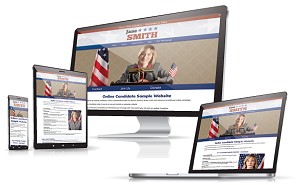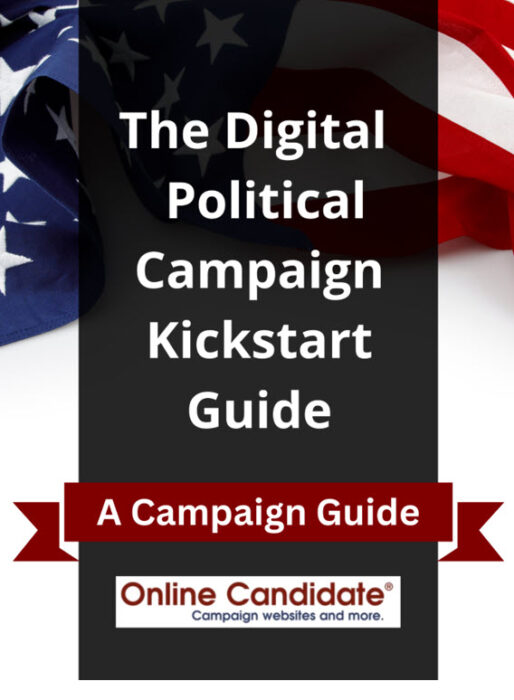Online video was once an expensive luxury reserved only for well-funded political campaigns and viewers with a good internet connection. Today, video is everywhere. You can shoot video (and even edit it) from just about any mobile phone and easily share clips to social media.
Video is an effective visual marketing tool for political campaigns of all sizes. As of 2020, there were an estimated 232 million video users in the United States. So a good video holds great potential for engagement and shares from voters and supporters.
For most campaigns, video clips are uploaded to YouTube and uploaded directly to campaign social media accounts, like Facebook, Twitter and Instagram. Video content can be easily embedded into a campaign website or blog. Organizations with larger budgets may use paid video hosting services to avoid advertising and branding from appearing with their clips.
Whether you plan to create professionally edited videos or quick clips recorded from a mobile phone, you may be struggling for content ideas that appeal to voters.
Here are a few suggestions on how to use video for your political campaign:
Create a personal introduction to voters
A personal introduction on a campaign website home page is a great way for voters to see and hear the candidate. A short, personal message about the candidate or why he or she is running can help give depth and personality to the site.

Let Us Create Your Candidate Intro Video!
Kick off your YouTube channel and with an intro video branded with your campaign and messaging.
Repurpose your campaign commercials
Your television (and radio) ads should be converted for placement on the web. You may want to name the the videos by date and subject. You can place your most current ads on your site’s home page to keep your site content fresh. When they are posted to your campaign’s YouTube channel, you will want to make sure the video’s title and description include relevant keyword phrases, as that can help them appear in search results.
Sometimes campaign ads go viral. This usually happens for either humorous or especially hard-hitting videos. In many cases, these are professionally produced.
Remember, online has far fewer restrictions on content. Sometimes a political advertisement that gets rejected by mainstream media outlets ends up getting even more exposure online than it would have had if it ran regularly in the first place. This, of course, begs the question of whether certain ads are purposely made conversational just to call attention to them when they are rejected…

Use legislative or municipal meetings to highlight a point
Here you can show the candidate or an opponent in action. Add annotations into the video to point things out. These types of videos are good for showing how a candidate really feels about an issue or how he or she reacts in session.
You don’t know a legislator until you’ve seen them in action.
Highlight campaign events and other interesting clips
Short clips of rallies, speeches and interviews can be of interest to voters. Edit the clips for length. Consider adding narration or closed captioning to explain what is going on.
As long as your sound is good, even short and informal video posts can help inform and entertain votes. Many candidates today are using live video for events or just to post quick updates. Facebook Live allows you to live-stream video directly to an audience through Facebook. Best of all, you don’t need a lot of preparation to produce these videos.
With Facebook Live, you can live-stream video directly to an audience through Facebook. Viewers can watch from their computer, mobile phone or other connected devices. For political campaigns, Facebook Live allows candidates to speak and engage directly to their audience. For supporters who cannot be physically be at an event, they can still participate (and donate).
Use video with your online fundraising
Add a video to your donation page to help explain your cause. If you have a special fundraising need, you’ll want your video to specifically address your goal. You can use the video on the donation page, post them your social media accounts and even use a screenshot of the video for your emails.

Final political campaign video tips
Try to keep your political campaign videos short and tightly edited. The average YouTube video is only about three minutes long – and voters do not generally have long attention spans. Also, do not set embedded videos to run automatically when the web page loads.
- Use a simple message that is clear and concise.
- Make your visual presentation professional, even if you are making an impersonal video. After all, your ad is going to be seen by voters.
- Use memorable words and concepts that accurately represent your campaign.
- Many users do not like music or video to start when they arrive on a web site. Many will automatically click off – and you don’t want to lose visitors that way.
- Strategically embed your videos into your content. You may want to explain what each video so the user knows what they will see.
- YouTube is a great place to have a video channel. However, if you want to embed video ad-free and without branding, consider using Kinsta or Vimeo for your video hosting needs.
Finally, don’t forget to add video to your get out the vote efforts. Use them in social media and your site. Remind voters to turn out for Election Day or to mail in those early ballots.
Related: Reach Early Voters Online
Video code can be easily embedded into any Online Candidate website. We also provide a Political Video Design services to kick off your YouTube channel and add to your campaign website.
« Resources for Teaching Political Campaigning to StudentsPreparing Your Campaign For Early Voting »
Tags: facebook, video, youtube







